From the tender age of eight while studying the pyramids, Jari Cox decided she had to travel the world. Since then, she has managed to get away every chance possible, and despite a student’s budget, this 19 year old is quite the globetrotter. She recently took a trip to Costa Rica to volunteer working with turtles, and although she enjoyed the introduction to Central/South America, it made her realize some of the restrictions of tour-based travel. Please enjoy this week-in-the-life of Jari in Costa Rica!
This post was originally published in 2012 . It has since been updated for accuracy of links and content.
Day One: Wednesday
4am – Wake up. We packed the night before so it is a simple matter of getting dressed and going downstairs. Our Project leaders, Arturo and Andrey, load us onto the public bus and we travel the six hours to Nosara, the closest town to the beachside community of Ostional.
11am – We stand on the side of a dusty road waiting for a pickup truck to take us the last 20km to Ostional. Our mostly-new backpacks finally get a taste of real travel dirt when they are dumped from the stomach of the bus onto the dusty road. The truck arrives and we load the bags into a voluptuous pile that takes up half the available seating space. In the end we have a third of the group balanced precariously on top of the bags, at the suggestion of our project leaders. I love how Costa Ricans place so much more faith in common sense and your own ability not to do something stupid.
We arrive in Ostional and are divided up into our local host families, and I am living with an elderly grandmother who doesn’t speak a word of English! Time to put our week of Spanish lessons into practice it seems. My housemate (Penny) and I are sleeping in a room so tiny that with our packs only one person fits at a time due to the bunk beds!
I take a shower to rinse off the dust from travelling by truck. In the bathroom I find a pipe sticking out of the wall about head height, and only one tap. Cold shower it is! I don’t really mind as it is so hot outside, and we quickly learn to have our showers in the middle of the day rather than when you first wake up.
Lunch is served: rice and beans, as expected. It isn’t the most delicious of meals but we are quickly getting used to the diet that fills you up and keeps you going. The abundance of fresh tropical fruit easily makes up for the lack of expensive meat in this little community.
We spend the rest of the day exploring the surrounding area and our house is about 200m from the beach. We get to know the local kids and try not to die in the humidity. It isn’t unexpected, but the weather is so different to the Central Valley (where we have spent the last week).
We have an orientation meeting and I volunteer for the 7pm – 12am turtle beach patrol with three other people, not knowing anything about what is involved.
11pm – We walk along the beach mostly in silence, admiring the bioluminescence glowing in the soft waves, and the stars…so many stars, too many to even try to name, though my new science student friend Nick gives it a shot. We haven’t been told what we are looking for exactly, or what to do if we find it. Our guide Jairo makes a sharp turn up the beach following truck wheel-like tracks we can see in the red torch light.
12am – We have just finished cataloguing our first nesting Olive Ridley turtle! We found her digging a deep pit with her ambidextrous rear flippers before settling into her egg laying trance. Once laying she is mostly unresponsive to other movement or sounds, which makes it very easy for us to collect our data.
Jade lies down near the turtle’s rear end and counts the number of eggs as they are laid while Nick and Hannah measure the carapace (shell) and flippers. I record all the data including the time and location on the beach. Jairo tags the flippers with metal clips and I make a note of the tag numbers.
Finally she uses her rear flippers to shovel the dark sand back on top of the eggs and throws her body from side to side and you can feel the small tremors running through the sand. She drags her exhausted body back to the ocean and we drag ourselves to bed.
Day Two: Thursday
9am – We have turtle data training on the beach in the hot sun. I wake up with a bit of a cold; but I don’t think it is anything to worry about. We get told about the rostering system; there are two night shifts every night from 7pm-12am and 12am-5am. There are also hatchery shifts all day every day that are six hours each, 6am-12pm, 12pm-6pm, etc; and a few other duties such as beach cleanup once a week.
11am – Nap time. The weather is so varied even over one day; nice and cool in the morning and then almost unbearably humid and warm from 11am-3pm before easing off in the afternoon. Glad I brought my Thai fisherman’s pants, they are unrestrictive and cool. I take my nap on the loungeroom floor, trying to steal the coolness from the concrete.
7pm-12am – Beach patrol, no turtles to be found. My cold feels worse, my nose is all blocked up but I keep trudging. After all, the turtles aren’t going to wait for me to get better.
Day Three: Friday
4:20am – Andrey bangs on our front door demanding we wake up and get dressed even though I only climbed into bed four hours ago. A leatherback is nesting on the beach though and when one of these dinosaurs hauls themselves up the beach; you get up and go have a look!
I feel groggy and full of germs, my cold starting to be at home in my exhausted body. Andrey drags Penny and I to the beach, points us north and tells us to run. So we do. We have one red light between us and avoid logs and stray dogs as we try to sprint the sand in hiking boots.
After careering, stumbling, tripping and gasping for about a kilometre, we reach the growing party of spectators, which includes local families and kids. It has just gone the new moon so there is no light and no red lights are allowed with the super photosensitive leatherback around.
We can only see shadows and I am doubled over gasping for air anyway, tears running down my face. I regain myself though and sit with the others as the turtle finds the salty water. She is an impressive, beautiful animal, despite the lack of light, and may be the only leatherback we see here.
6am-12pm – Hatchery shift for me, I am reading ‘The Power of One’ and journaling. Hundreds of swallows come out at about 7am to feast on the fly all over the beach, darting and diving, while pelicans skip over the waves in wobbly formation.
The beach is not beautiful; it is littered with broken turtle egg shells and the sand is dark grey, a mix of sand and organic matter, again from the broken eggs. With the sun is too hot to stand on but somehow it is still serene, especially in the early morning.
3pm – Nick and I visit the local store for snacks. There is a counter and you have to ask the gentleman for what you want, you cannot browse, which makes it difficult when your Spanish isn’t amazing.
We use miming, our dictionary and laughter, and end up with some strange sweet biscuits. We find a shady spot on the beach and just sit for an hour or two just being in Costa Rica. Life is slower here, calmer, and there is always time.
7pm-12am – Beach patrol; we see an Olive Ridley but what we really want are the leatherbacks and black turtles. As we walk, our steps activate the bioluminescent single cell organisms left over from the waves, leaving footprints that glow and glitter so faintly it almost looks like a trick of the eye.
Day Four: Saturday
8am – I wake up and have no sense of taste at all. The coffee I get with the rice and beans breakfast is warm in my mouth but be water and I wouldn’t know the difference. It is my little sister’s twelfth birthday today, the very first one I haven’t been there for. I didn’t think I would mind too much, but when I call her to sing Happy Birthday I get all choked up.
3pm – Beach cleanup. We walk to a stretch of beach just north of the Nosara river mouth and are given huge garbage bags to fill with trash that we find. It doesn’t take long. All the garbage gets washed down the river from Nosara and then onto the beach with the tide and we quickly fill our bags with deodorant canisters, odd shoes, empty petrol bottles and soda cans.
Once full we find a sturdy stick and tie the bag in the middle before lugging it back in pairs to the research centre where it will be taken to the dump. In the end we clear 210kg of rubbish off one kilometre of beach in three hours.
By the end of the day my sense of taste has returned. I don’t feel sick, more like it is that last day of feeling ill and tomorrow I will be fine. (That said, I feel that way for about a week).
Day Five: Sunday
12am-4:30am – Beach Patrol! I’m excited this time because the late night patrols always see more turtles than the earlier group. We see our first Olive Ridley about 12:40am and another shortly after. We take data from six turtles before the night is done, each one taking at least half an hour as we wait for them to dig the body pit and nest and lay the eggs. At one point we are collecting data from two turtles at once as they nest only five metres apart!
4:40am – I realise I have lost my house key. I don’t want to wake up my host family so decide to stay at the research station and semi-sleep awkwardly on a narrow bench. Some of the other students go home to get cameras so they can take photos of the sunrise and turtles and all six of us go back to the beach at 5:30am when the first light is appearing.
At first we follow turtle tracks to find the nesting females, but soon you simply have to look around to be able to see five or more. My camera is still at home as we have no need for them on patrol, which is an excellent lesson to always take your camera!
While the most brilliant sunrise colours the sky, we settle down on the beach, surrounded by sea turtles coming from and returning to the ocean. Looking out to the waves we can see scores of little heads bobbing up and down in the water as the sea turtles look for land and air. It is another peaceful morning, and we sit by quietly admiring nature going about its business.
9am – I take Penny down to the beach to show her the amazing mass of turtles. No sea turtles to be seen, not one. It is only with the testimony of the other students who were with me that I convince her I wasn’t dreaming…
Day Six: Monday
We have a whole day off, no hatchery, training or patrols for 24 hours!
We go for a boat tour from nearby San Juanita beach and see Olive Ridleys sunning themselves in the ocean, eagle rays leaping and doing belly flops in the ocean, a yellow sea snake and a pod of dolphins!
We have pizza for lunch, a superficial relief after having black beans and rice for 80% of our meals the last two weeks! The day recharges us, as does the uninterrupted sleep that night. We have been working hard, but it doesn’t feel like work, it feels like an opportunity to do and be more. I suppose that is what volunteering is all about.
(Editor’s Note: It’s quite interesting to read about Jari’s turtle-volunteering experiences, especially given my recent encounters with a few Grunting Turtles myself!)
Next on the itinerary for Jari is America in June/July for five weeks: 2 weeks traveling through California via bus and couchsurfing, and 3 weeks studying News Production at Butler University, Indianapolis. Before the end of the year she will visit Singapore and hopefully volunteer at Australia Zoo in Queensland. If anybody wants to volunteer at Ostional with the sea turtles they can visit this site or International Student Volunteers. Last but not least, you can follow Jari’s blog at Kodiko.

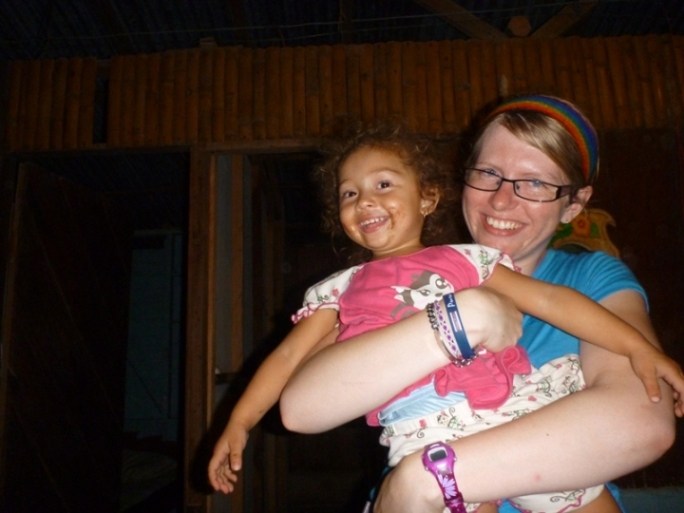
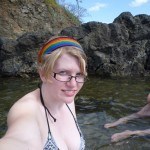
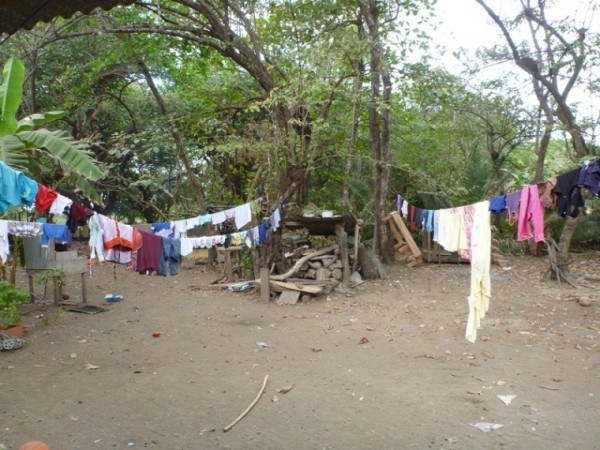
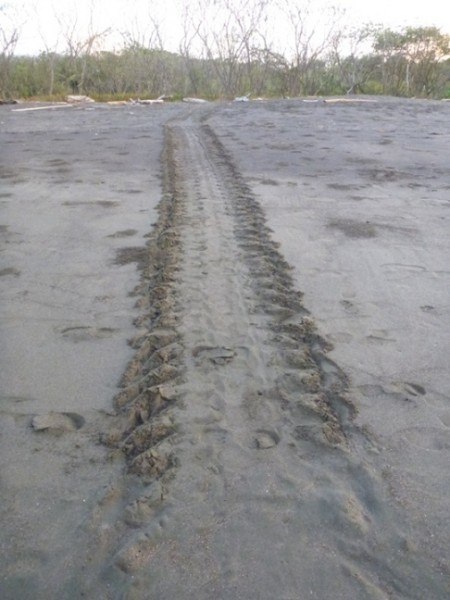
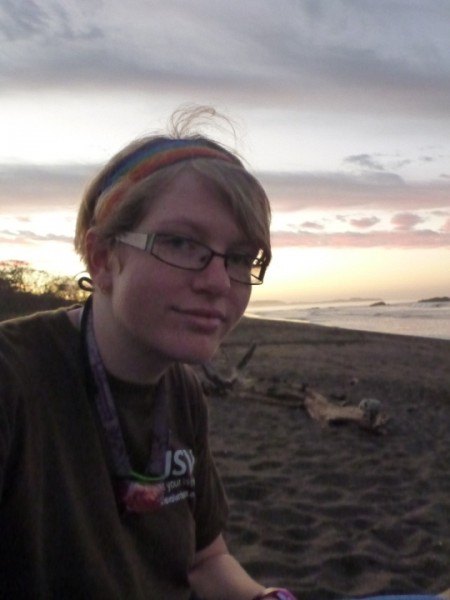
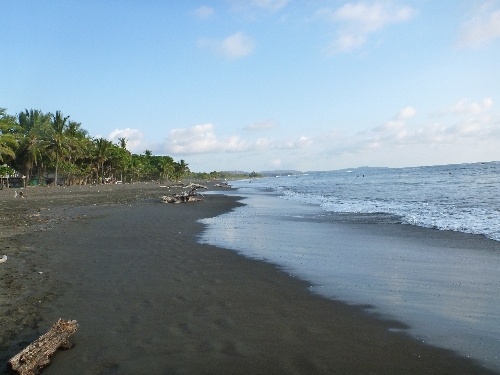
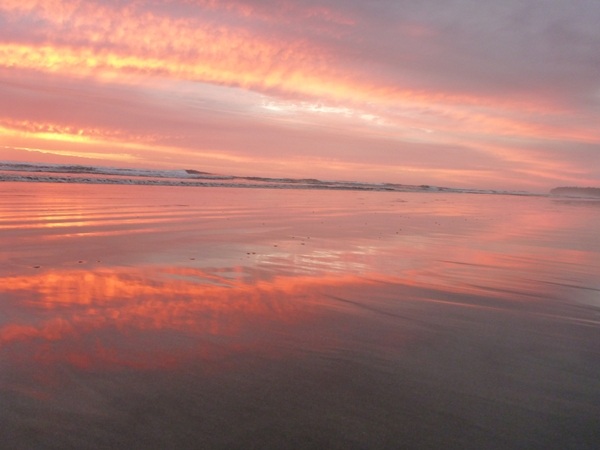

This sounds like a magic experience. I’ve never seen turtles in the wild. That sunset is incredibly gorgeous!
Great experience, something to remember forever, thanks for sharing…….